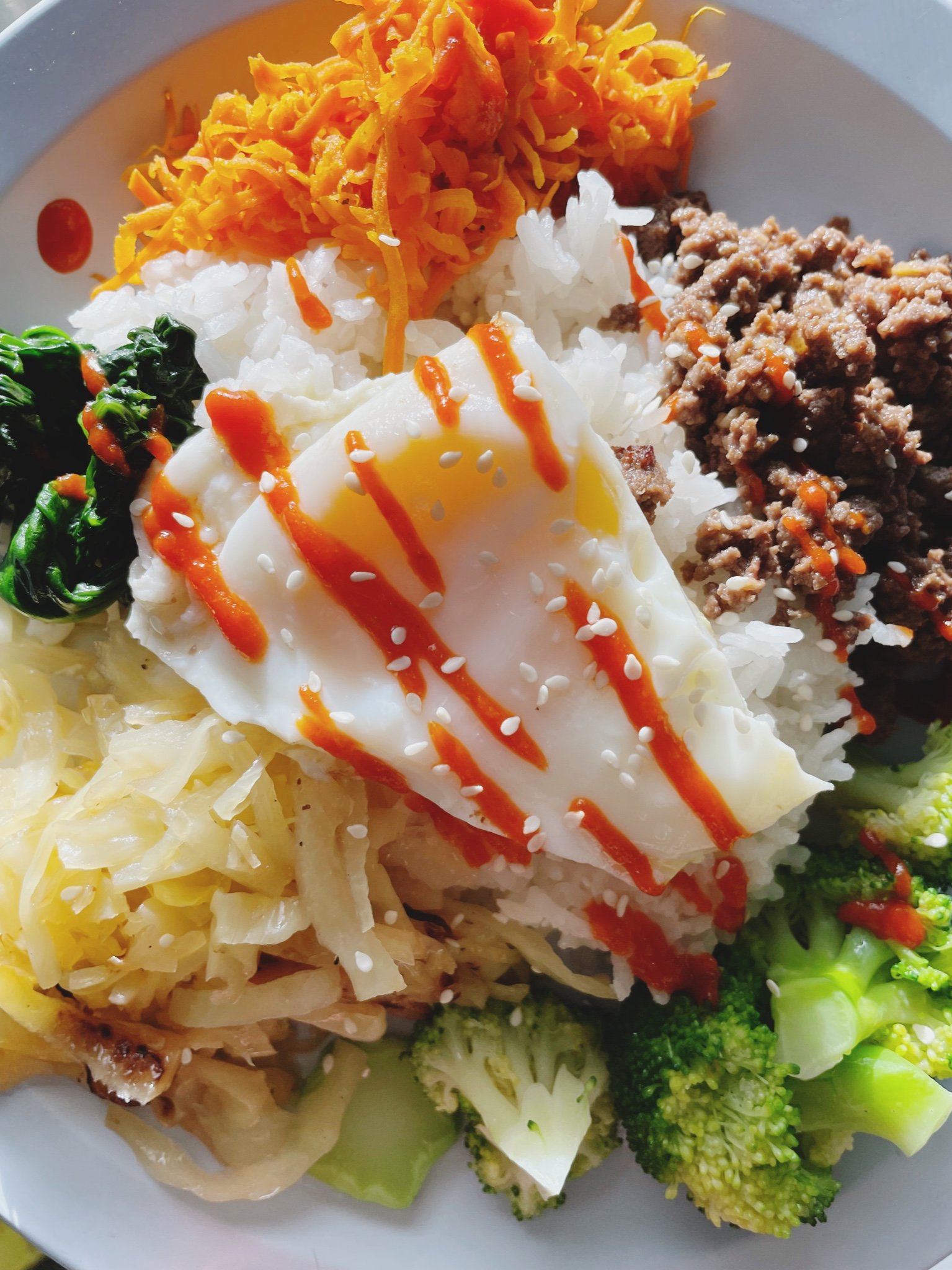Bibimbap: a mixture of memories
Bibimbap is a dish that is close to my heart for several reasons. We ate it often for staff supper at work when I was apprenticing, and in the years afterwards. During the work day, our brigade ate meals together, in addition to stopping for coffee breaks, all at the kitchen table. This collapsible table would be brought out several times throughout the day, and would be dressed with clean linens and dish-ware. It was purposeful. Preparing these meals were a shared responsibility of the junior cooks, and it was a chance to share our heritage and hearts with each other. It was important and had value. Because of these experiences, I stocked only the best quality short grain rice, and kept kimchi in our apartment fridge.
Another big moment where this meal was eaten, was when I first met Pauline Boldt in fall of 2016. Our offices had once been in the same building, and both camp staff and 26 Projects staff frequented the Korean restaurant on street level. The lunch meeting where Neil introduced me to Pauline was the first time I’d had bibimbap in a long time. This shared experience affirmed the beginning of the VOLUME cookbook project in the months that followed.
Fast forward to this year. Inter-cultural awareness reflected in camp menus has been a growing trend for our national collection of 9 camps within InterVarsity, and this dish very quickly has become the flagship meal of our goal to be more intentional. This meal, which translates to ‘mixed up’ has so much flexibility in toppings, that it is likened to taco salad, but with rice. It is very capable of being adapted for allergies or dietary restrictions and just like with taco salad, makes you have to talk to your table mates to pass the goods.
Join us as we prepare the table for many this summer.
Bibimbap - ‘mixed up’ Serves: 5-7
There are many components to this meal, and the bowls can be prepared with all the garnishes, or, can be assembled by the guests themselves based on their own tastes. Here is the list of components:
beef: ground beef is marinated in its raw state, then cooked
rice: short grain is best
vegetables: a combination of at least three of these suggestions: peas, broccoli, edamame, gui lan, spinach, carrot julienne, mushrooms, bean sprouts, anything you have on hand!
sauces: Gochujang and Doenjang are a great combination. Soy sauce is a good back up extra
egg: the centre of the collection of items. Best if the yolk is still runny. Sunny side up or basted works best.
other garnishes: kimchi, sesame seeds, seaweed or nori strips
Beef:
2 lbs lean ground beef
3 Tbs brown sugar
3 Tbs sesame oil
1/3 cup soya sauce
4 tsp garlic, chopped fine
Other components:
1/3 cup to 1/2 cup sticky (short grain) rice per person (100-150g per portion)
1-2 eggs per person
Vegetables: total weight fresh 85-125g per person of all vegetables (see suggestion list, above)
Instructions:
Mix and marinate the beef ingredients together. Return to the fridge for up to two hours before cooking.
Prepare the sauces (below).
Measure rice and follow package instructions for water amounts depending on what cooking method you will be using (rice cooker or stovetop).
Prepare all vegetable options. If sautéing, be sure to do it as last minute as possible.
Crack the eggs needed, into a bowl.
Cook beef mixture 15 minutes prior to the meal service in a hot frying pan.
Preheat pan to fry the eggs. Sunny side up or basted is ideal so that the yolk remains runny which is nice for mixing into the hot rice with the garnishes.
Dish up or place components into bowls for family style service so that guests can build their bowls as they like. The rice should be in the centre, with the garnishes around the circumference, and the egg in the centre of the rice. Sauces and other final garnishes should be added by the guest to their taste.
This is the spicy sauce: Gochujang. It isn’t too spicy, just spicy enough.
Gochujang Sauce Serves up to 15
1/2 cup Gochujang (Korean red pepper paste)
1/4 cup sesame oil
1/4 cup white sugar
1/4 cup water
1/4 cup roasted sesame seeds
4 tsp rice vinegar
4 tsp garlic, chopped fine
Instructions:
Chop the garlic.
Measure all the ingredients into a small mixing bowl, and mix well.
Pour into a squeeze bottle.
Refrigerate and use for up to 1 month. This sauce can be made in advance.
Doenjang Sauce (not spicy) Serves up to 15
Ingredients:
3/4 cup Korean doenjang paste, or, white miso paste
3/4 cup water
1/3 cup sesame oil
2 Tbs honey
2 Tbs garlic puree
3 Tbs roasted sesame seeds
3 Tbs rice vinegar
2 Tbs lemon or lime juice
Directions:
Measure the ingredients into a mixing bowl.
Mix well with a whisk, and pour into a squeeze bottle. This sauce can be prepared in advance, and should be stored in the refrigerator. Serve for up to a month.
“This recipe was adapted from Korean food blogger, Sue’s recipe from MyKoreanKitchen.com”




